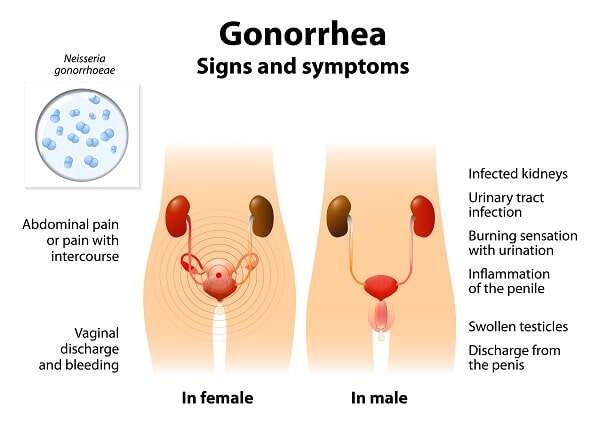A 15-year-old male comes to the health department because he thinks that he may have gonorrhea. If he has gonorrhea, which symptom is he most likely to have?
Inflammation and edema of the scrotum.
Painful urination with yellow urethral discharge.
Maculopapular rash in the genital area.
Red, hard lesion on the penis.
The Correct Answer is B
Choice A rationale:
Inflammation and edema of the scrotum is not a typical symptom of gonorrhea. Scrotal involvement is more commonly associated with conditions like epididymitis.
Choice B rationale:
Painful urination with yellow urethral discharge is a classic symptom of gonorrhea. The infection affects the genitourinary tract, causing discomfort during urination and a characteristic purulent discharge.
Choice C rationale:
Maculopapular rash in the genital area is not a typical presentation of gonorrhea. This type of rash might be seen in other infections, such as syphilis.
Choice D rationale:
Red, hard lesion on the penis is not a common manifestation of gonorrhea. This description more closely matches the appearance of a primary syphilis chancre.

Nursing Test Bank
Naxlex Comprehensive Predictor Exams
Related Questions
Correct Answer is B
Explanation
Choice A rationale:
Allowing the patient to remain in the chosen position is inappropriate as the patient's position indicates distress. This choice should not be chosen.
Choice B rationale:
Placing the patient in semi-Fowler's position is the correct action. This position optimizes lung expansion and promotes easier breathing, which is crucial in managing status asthmaticus.
Choice C rationale:
Administering 100% oxygen via a face mask might be necessary eventually, but optimizing positioning takes precedence. Semi-Fowler's position should be established first.
Choice D rationale:
Encouraging consumption of cool, clear fluids is not the immediate priority in managing status asthmaticus. Respiratory support and positioning are more crucial.
Correct Answer is C
Explanation
Remove all beverages from the patient's bedside.
Choice A rationale:
Giving the patient a laxative is inappropriate and unnecessary in the context of a ruptured appendix. The focus should be on preparing the patient for surgery and managing the acute condition.
Choice B rationale:
Administering ibuprofen should be avoided as it can mask symptoms and potentially worsen the patient's condition by masking signs of inflammation or infection. This delay in appropriate care could lead to complications.
Choice C rationale:
Removing all beverages from the patient's bedside is essential. NPO (nothing by mouth) status is typically maintained for patients with suspected appendicitis or other surgical conditions to prevent potential aspiration in case surgery is required.
Choice D rationale:
Providing a heating pad is contraindicated in cases of suspected appendicitis or any acute abdominal condition. Heat can worsen inflammation and potentially cause the appendix to rupture, leading to more severe complications.
Whether you are a student looking to ace your exams or a practicing nurse seeking to enhance your expertise , our nursing education contents will empower you with the confidence and competence to make a difference in the lives of patients and become a respected leader in the healthcare field.
Visit Naxlex, invest in your future and unlock endless possibilities with our unparalleled nursing education contents today
Report Wrong Answer on the Current Question
Do you disagree with the answer? If yes, what is your expected answer? Explain.
Kindly be descriptive with the issue you are facing.
